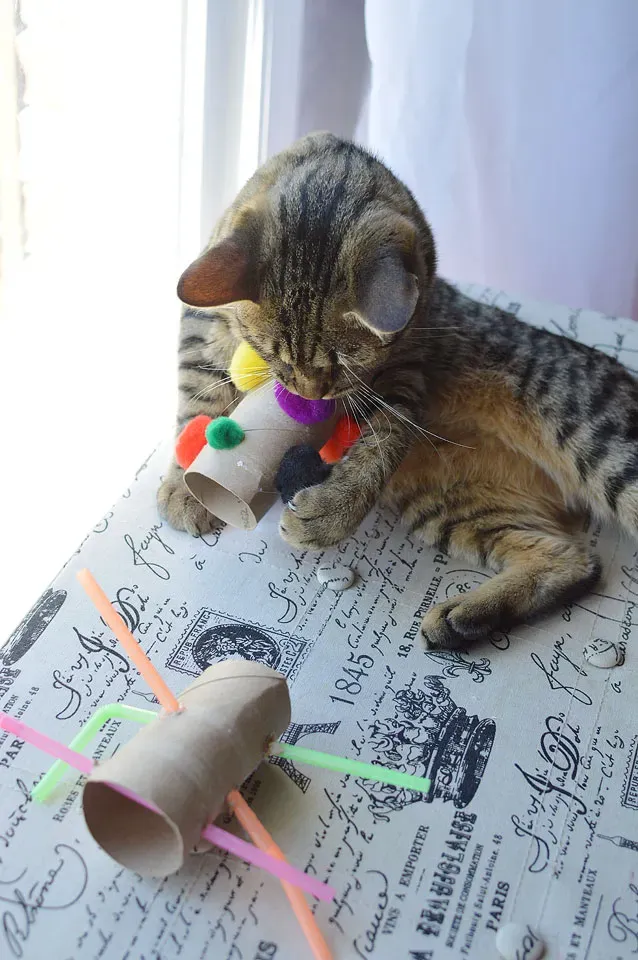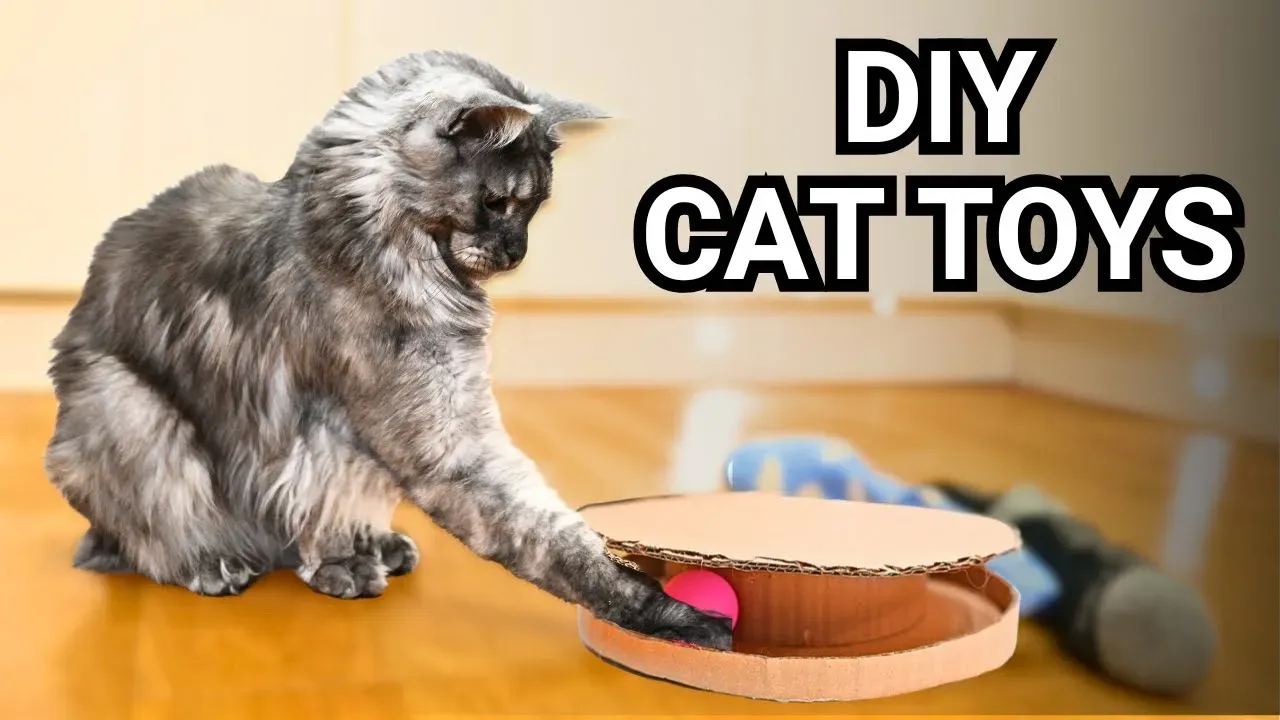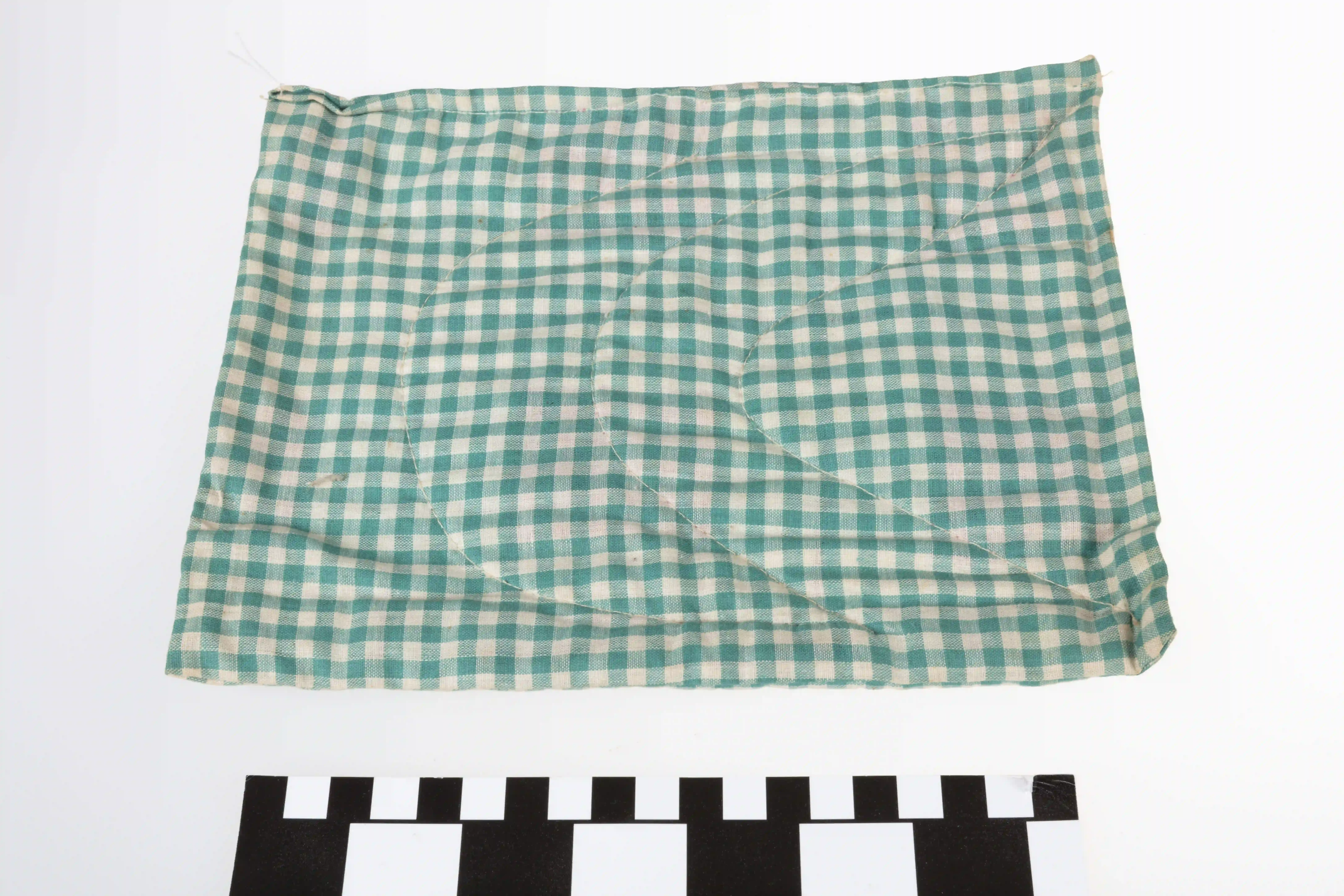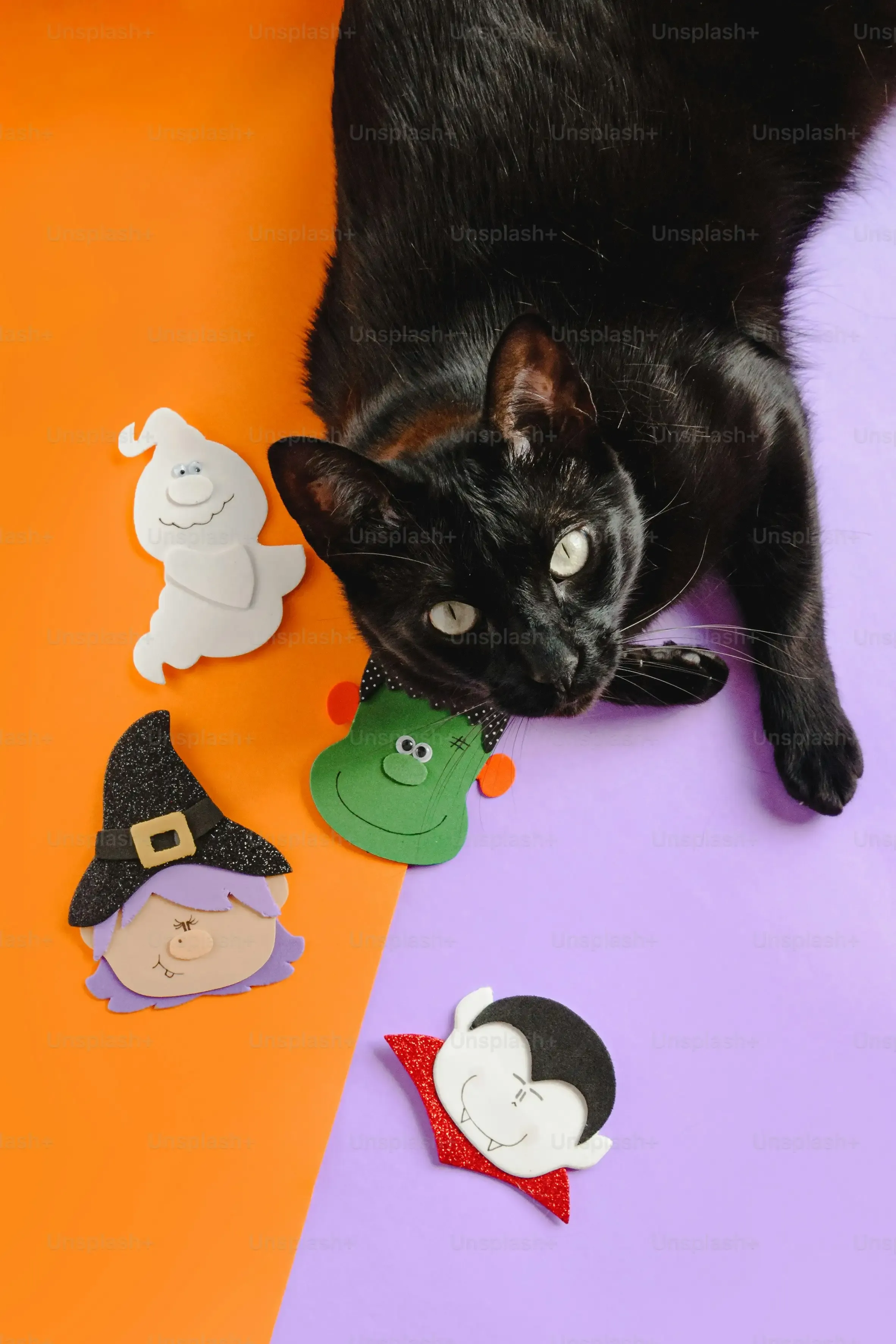Table of Contents
Let's be honest. You spend good money on fancy cat toys with bells and whistles, and what does your feline overlord play with? The box it came in, or maybe a stray dust bunny. It’s enough to make you question your life choices. But before you surrender your wallet to the pet store industrial complex, consider this: you can create fantastic, engagingtoys for cats homemadethat your cat might actually prefer. Yes, really.
Why Make Toys for Cats Homemade? Save Money and Engage

Why Make Toys for Cats Homemade? Save Money and Engage
Stop Wasting Cash on Ignored Gadgets
Let's face it, pet stores are masters of separating you from your money with shiny, crinkly things your cat will sniff once and walk away from. You buy the latest laser pointer, the expensive catnip-filled mouse, the elaborate multi-level trackball, and your cat's still batting at a bottle cap under the fridge. It's a tale as old as time, or at least as old as domesticated felines. Makingtoys for cats homemadecuts that cycle right out. You bypass the markup, the packaging, and the existential dread of another unused pet product cluttering your home.
Think about it. A few dollars for some basic craft supplies, or literally just raiding your recycling bin, can yield a week's worth of entertainment. Compared to dropping twenty bucks on a "smart" toy that requires an app update, the financial sense is undeniable. It's not just about being cheap; it's about being practical when dealing with an animal whose favorite toy is often whatever isn't intended to be a toy.
Tap Into Natural Instincts with Novelty
Cats are hunters, plain and simple. They thrive on novelty, on things that move unpredictably, and on textures they can sink their claws into. Store-bought toys, while sometimes hitting the mark, can become predictable quickly. Homemade toys, however, offer a constant stream of new shapes, sounds, and scents. That empty paper towel roll becomes a tunnel of mystery, a crumpled piece of paper is suddenly elusive prey, and a sock tied in knots is the perfect wrestling buddy.
Creatingtoys for cats homemadeallows you to tailor the play experience directly to your cat's preferences. Does your cat love crinkly sounds? Aluminum foil ball. Are they obsessed with batting things that roll? Plastic bottle cap. This personalized approach often leads to more enthusiastic and sustained engagement than a generic toy ever could. Plus, the slight variation and imperfection in a homemade item can make it seem more like live prey, triggering that innate predatory drive.
What's the most expensive cat toy you bought that your cat ignored?
Simple Household Items That Become Great Toys for Cats Homemade

Simple Household Items That Become Great Toys for Cats Homemade
The Humble Cardboard Box and Paper Bag
Forget those elaborate cat trees that cost more than your sofa. The absolute champions oftoys for cats homemadeare often the simplest things you throw away. A cardboard box, any size really, is an instant fort, a scratching post, a hiding spot, and a pouncing platform. Cats are hardwired to explore confined spaces; a simple box taps directly into that instinct. Just make sure you remove any staples or tape that could be a hazard.
Equally thrilling is the paper bag. The crinkle, the smell, the ability to dart inside and ambush unsuspecting ankles – it's pure feline joy. Again, safety first: snip off any handles to prevent your cat from getting tangled. Avoid plastic bags entirely, as they pose a serious suffocation risk. But a sturdy paper grocery bag? Instant entertainment for hours. My own cat, a creature of refined tastes who once turned her nose up at salmon pâté, will happily spend twenty minutes wrestling a crumpled paper bag.
Plastic Bottles, Rolls, and Crumpled Paper
Look around your recycling bin. That empty plastic water bottle? Instant crinkle toy. Just make sure the cap is screwed on tight. An empty paper towel or toilet paper roll? Prime material for batting around or even hiding treats inside for a simple puzzle toy. The possibilities are endless with these cylindrical wonders. You can even cut holes in a larger cardboard box and insert rolls for a DIY treat dispenser.
Then there's crumpled paper. It seems too simple, right? Wrong. The sound, the unpredictable bounce, the light weight perfect for batting across the floor – it hits all the right notes for a cat. A piece of junk mail you were about to shred? Crumple it up. An old receipt? Ball it up. It's the zero-cost, zero-effort cat toy that consistently delivers. Just ensure the paper doesn't have any toxic inks or small pieces that could be swallowed.
Here are a few household items that are surprisingly popular homemade cat toys:
- Cardboard boxes (handles removed)
- Paper bags (handles removed)
- Empty paper towel or toilet paper rolls
- Crumpled paper (non-toxic ink)
- Plastic bottle caps (ensure they are large enough not to be swallowed)
- Old socks or t-shirts tied in knots
- Wine corks
Beyond the Obvious: Corks, Socks, and More
Don't stop at cardboard and paper. An old wine cork? Cats love the texture and the way it bounces. It's also great for absorbing scents, so a little catnip rub can make it irresistible. Old socks or t-shirts you're about to donate? Tie them in knots and you've got a wrestling toy your cat can really sink their teeth (and claws) into. The familiar scent of their human on the fabric can also be comforting.
Plastic bottle caps, provided they are large enough that there's zero chance of ingestion, are excellent for batting practice across tile or hardwood floors. The way they skitter and spin mimics the erratic movement of prey. Even something as simple as a sturdy twig from the yard (make sure it's clean and not from a toxic plant) can be a fascinating new texture for your cat to interact with, though this is best supervised.
Easy DIY Projects for Engaging Toys for Cats Homemade

Easy DIY Projects for Engaging Toys for Cats Homemade
Whip Up a Toilet Roll Treat Dispenser
Alright, so you've got a pile of empty toilet paper or paper towel rolls sitting around. Don't toss 'em just yet. These are gold for makingtoys for cats homemadethat double as puzzle feeders. It's ridiculously simple. Grab a roll, flatten it slightly, and fold in one end. Drop a few kibbles or small treats inside. Then, fold in the other end, but maybe not perfectly sealed. The idea is your cat has to bat it around, roll it, and figure out how to get the goodies out. It taps into their foraging instincts and keeps them busy for a solid few minutes, preventing that "I'm bored, I guess I'll knock this off the counter" behavior.
For a slightly more advanced version, take several rolls, glue or tape them together in a small cluster or line, and stand them upright in a shallow box or dish. Drop treats into some of the tubes. Your cat now has to reach in with a paw to fish them out. It requires a bit more dexterity and problem-solving, offering a different kind of mental stimulation. It’s proof that effective enrichment doesn't require a degree in engineering, just some household trash and a little imagination.
Craft a Sock Fish or Feather Teaser
Got an old sock with no partner? Perfect. Stuff it with some fabric scraps, maybe a little crinkled paper, and a pinch of catnip if you're feeling generous. Tie off the end tightly. Boom, you've got a wrestling toy that smells like you and is satisfyingly kickable. You can even sew or draw eyes on it if you're feeling artistic, though your cat likely won't care about the aesthetics. The key is the texture and the ability to bunny-kick it into submission. These make excellenttoys for cats homemadefor solo play or interactive tossing games.
Another classic is the feather teaser. Find a sturdy stick, dowel, or even a long, stiff piece of wire (ensure no sharp ends). Attach some feathers or strips of fabric securely to one end using strong string, tape, or glue. Make sure everything is firmly attached so nothing comes off and gets swallowed. Drag it along the floor, flick it around corners, make it dart and hide. This mimics the erratic movement of birds or mice and is fantastic for interactive play, helping you bond with your cat while tiring them out. Just store it away when you're not supervising.
Materials you might need for simple DIY cat toys:
- Empty toilet paper or paper towel rolls
- Old socks or t-shirts
- Fabric scraps
- String or twine (sturdy, natural fibers preferred)
- Feathers (natural or craft)
- Non-toxic glue or strong tape
- Scissors
- Treats or kibble
- Catnip (optional)
Keeping Your Toys for Cats Homemade Safe and Fun

Keeping Your Toys for Cats Homemade Safe and Fun
Mind Your Materials
Creatingtoys for cats homemadeis great, but not everything lying around your house is safe for your cat to chew on or ingest. You wouldn't let a toddler chew on a battery, right? The same caution applies here. Avoid anything with small parts that can break off easily. Steer clear of materials treated with harsh chemicals, paints, or varnishes that aren't pet-safe. Think natural fibers like cotton or hemp twine instead of synthetic string that can unravel and cause intestinal blockages. Check for sharp edges on cardboard or plastic.
Glues and tapes should be non-toxic and used sparingly, ensuring they are completely dry and inaccessible to chewing. If you're stuffing a sock toy, use clean fabric scraps or batting, not old, dusty insulation or anything that could contain mold or irritants. A little common sense goes a long way. When in doubt, leave it out. Your cat's health isn't worth the risk for a ten-cent toy.
Size Matters: Avoid Choking Hazards
This seems obvious, but it's surprising how often people overlook it. Anything small enough for your cat to swallow is a potential disaster. We're talking buttons, beads, googly eyes glued onto a toy, small plastic rings, even bits of unraveling string. Cats have barbed tongues that make it difficult to spit things out once they're in their mouth, often forcing them to swallow.
Consider the size of the toy in relation to your cat's mouth. A good rule of thumb: if it's smaller than their jaw width, it's probably too small. This is especially critical with items like plastic bottle caps – some cats can chew pieces off or swallow them whole. Ensure holes in cardboard boxes or rolls are large enough that your cat can't get their head stuck. Safety isn't boring; it prevents emergency vet visits that cost way more than that fancy store-bought toy you avoided buying.
Potential hazards in homemade cat toys:
- Small buttons, beads, or plastic eyes
- Loose string, yarn, or ribbon
- Sharp edges on cardboard or plastic
- Toxic glues, paints, or finishes
- Stuffing that can be easily pulled out
- Items small enough to be swallowed whole
Supervise Play and Inspect Regularly
Just because you made the toy doesn't mean it's indestructible or safe for unsupervised play forever. Always supervise your cat, especially with new homemade creations. Watch how they interact with it. Are they trying to eat it? Is it falling apart quickly? Interactive toys, like feather wands on a string, should *always* be put away when you're not actively playing with your cat. That dangling string looks like prey, but it's a serious ingestion hazard if chewed and swallowed.
Make it a habit to inspect yourtoys for cats homemaderegularly. Look for signs of wear and tear: unraveling seams on a sock toy, pieces breaking off cardboard, loose strings, or anything that looks like it could become a hazard. Discard damaged toys immediately. It might seem wasteful, but replacing a worn-out toy is far better than dealing with an intestinal blockage or other injury. Your role isn't just maker; it's also safety inspector.
Wrapping Up Your Homemade Toy Adventure
So there you have it. Before you drop another twenty bucks on a laser pointer that just frustrates everyone involved, take a look around your house. That empty paper towel roll? Potential gold. Those old socks? Prime catnip vessel. Makingtoys for cats homemadeisn't just about saving money; it's about providing novel, engaging enrichment that commercial toys often miss. Your cat might still ignore your masterpiece for a bottle cap, because, well, cats. But the effort is minimal, the cost is negligible, and you might just stumble upon their new favorite obsession. Give it a shot. The worst that happens is you end up with a slightly messier house and a cat who remains unimpressed. Standard cat ownership, really.